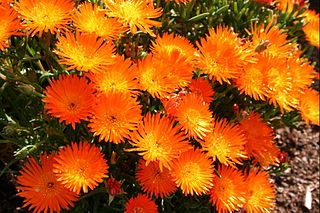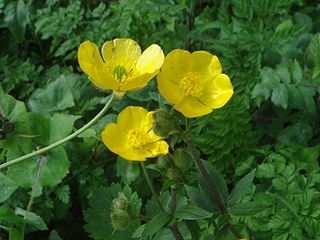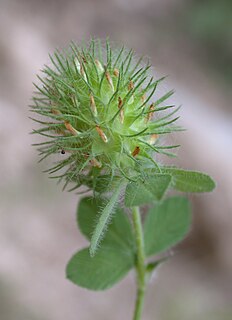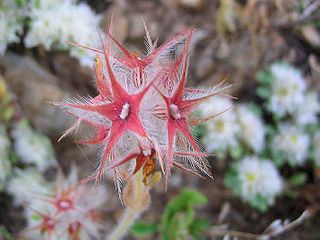Hypericum australe is a species of plants in the family Hypericaceae. Individuals can grow to 24 cm tall.

Lampranthus aureus is a species of shrub in the family Aizoaceae. They are succulent plants. They have a self-supporting growth form and simple, broad leaves.

Lampranthus spectabilis is a species of plants in the family Aizoaceae. They are succulent plants.

Melilotus segetalis is a species of plants in the family Fabaceae.
Mesembryanthemum lancifolium is a species of plants in the family Aizoaceae. They are succulent plants.

Micromeria graeca is a plant species in the family Lamiaceae.
Micromeria microphylla is a species of plants in the family Lamiaceae.

Muscari parviflorum is a species of plants in the family Asparagaceae.

Orobanche caryophyllacea is a plant species in the family Orobanchaceae.

Parietaria lusitanica is a species of plant in the family Urticaceae.

Plantago serraria is a species of plants in the family Plantaginaceae.

Ranunculus macrophyllus is a species of plants in the family Ranunculaceae.

Romulea ramiflora is a species of plant in the family Iridaceae.
Spirodela oligorrhiza is a species of plants in the family Araceae.

Trifolium lappaceum, the burdock clover, is a species of annual herb in the family Fabaceae. They have a self-supporting growth form and compound, broad leaves.

Trifolium scabrum, the rough clover, is a species of annual herb in the family Fabaceae. They have a self-supporting growth form and compound, broad leaves. Individuals can grow to 0.12 m.
Trifolium squarrosum is a species of annual herb in the family Fabaceae. They have a self-supporting growth form and compound, broad leaves.

Trifolium stellatum, the star clover, is a species of annual herb in the family Fabaceae. They have a self-supporting growth form and compound, broad leaves. Flowers are visited by mason bees, Anthocopa, Osmia aurulenta, and Anthophora. Individuals can grow to 0.11 m.

Trifolium suffocatum, the suffocated clover, is a species of annual herb in the family Fabaceae. They have a self-supporting growth form and compound, broad leaves. Individuals can grow to 4.2 cm.

Trifolium tomentosum, the woolly clover, is a species of annual herb in the family Fabaceae. They have a self-supporting growth form and compound, broad leaves. Individuals can grow to 8.9 cm.














